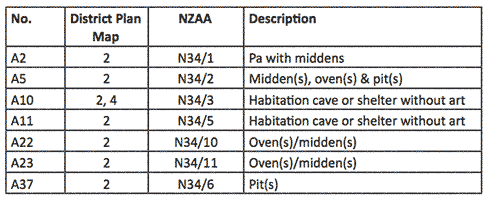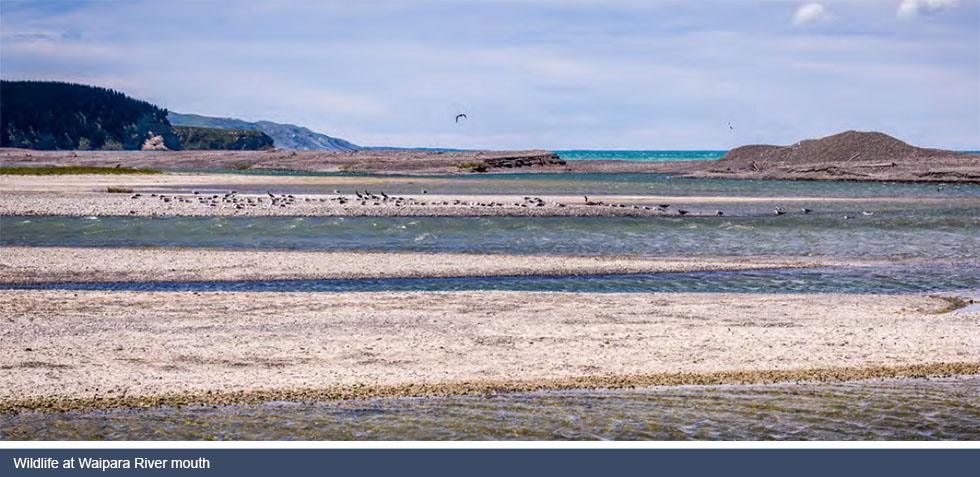

Home > Maori Cultural Values
Maori Cultural Values
Māori have long held an association with the Waipara River as it was once a significant mahinga kai and was part of the trading routes along the coast. The importance of the Waipara River and lagoon are reflected in the Statutory Acknowledgement under the Ngāi Tahu Claims Settlement Act 1998. This means that the Council must forward all relevant resource consents to Te Runanga o Ngāi Tahu and that the Historic Places Trust or the Environment Court must have regard for the statutory acknowledgement, to empower officials to enter into a deed of recognition and to give Ngāi Tahu Whānui proof of their long affiliation with the river. The Statutory Acknowledgement summarises the history that Ngāi Tahu Whānui have with the Waipara River in the following reference:
“Tradition tells of the duel between two famous rangatira (chiefs) which happened in this area. Tutewaimate, a Ngāti Māmoe rangatira, found that the northward trade route that he had sent his goods along was being disrupted by Moko, a rangatira of the Ngati Kurī hapū of Ngāi Tahu who had been acting as a bandit along the route. Tutewaimate went to confront Moko, who lived in a cave at Waipara, but found him sleeping. Tutewaimate allowed Moko to awake before attacking him. Tutewaimate’s sense of fair play cost him his life and is recalled in a tribal proverb.
There are a number of Ngāti Wairaki, Ngāti Māmoe and Ngai Tahu urupā and wāhi tapu along the river and associated coastline. Urupā are the resting places of Ngāi Tahu tūpuna and, as such, are the focus for whanau traditions Urupā and wāhi tapu are places holding the memories, traditions, victories and defeats of Ngāi Tahu tūpuna, and are frequently protected by secret locations.
The [Waipara] river and associated coastline was a significant mahinga kai, with kai moana [sea food], particularly paua, being taken at the mouth. The tūpuna had considerable knowledge of whakapapa [genealogy], traditional trails and tūranga waka [places for gathering food and taonga], ways in which to use the resources of the river, the relationship of people with the river and their dependence on it and tikanga [customs] for the proper and sustainable utilisation of resources. All of these values remain important to Ngāi Tahu today. The mauri of the Waipara River represents the essence that binds the physical and spiritual elements of all things together, generating and upholding all life. All elements of the natural environment possess a life force, and all forms of life are related. Mauri is a critical element of the spiritual relationship of Ngāi Tahu Whānui with the river.”
Schedule 74 Ngāi Tahu Claims Settlement Act 1998.
The deed of settlement signed under the Ngāi Tahu Claims Settlement Act 1998 also includes redress in the form of nohoanga camping entitlements. Nohoanga entitlements give Ngāi Tahu the exclusive right to camp temporarily at certain sites situated near rivers and lakes to facilitate customary activities such as fishing and gathering of other natural resources like plants. These nohoanga sites can only be created over Crown land within the claim area. Nohoanga sites are located at traditional food gathering sites and do not allow for commercial use of the site. There are a total of 72 nohoanga spread throughout the South Island with each one around one hectare in size. The entitlements are seasonal and are a ‘right to occupy’ a site for up to 210 days per year between mid-August and the end of April. A nohoanga right is not a permit to kill species that are otherwise protected by conservation legislation. Public access to rivers or fishing rights are not affected within the designated area. There are two nohoanga sites within the Waipara River. The first of these is located at the riverbed at the Waipara River Mouth, opposite Lot 1 DP 17853. The second site is located part within the Waipara River bed adjoining Barnetts Road, Waipara.
There are a number of urupā (burial sites), waahi tapu (places of particular significance to local Māori that hold an element of sacredness due to a certain event), and waahi taonga (culturally, spiritually, physically and historically significant items) located in close proximity to Waipara River. The location of many of these sites is protected although the following sites are identified in Appendix A8.2 of the Hurunui District Plan – Schedule of recorded archaeological features:

Key issues and opportunuties identifed through research and consultation
The Waipara River lies within the takiwa of Ngāi Tūahuriri. On behalf of the whānau of Ngāi Tūahuriri, the Ngāi Tūahuriri Rūnanga would seek to have the following key outcomes recognised and provided for within the future management of the Waipara River:
- Protect and enhance the mauri of the river
- Protect all sites and values of tapu and taonga significance to Ngāi Tahu within the catchment of the river
- Enhance access by members of local Papatupu Rūnanga
- Protect mahinga kai values significant to Ngāi Tahu within the catchment of the river and the ecology that supports those mahika kai values
- Adopt catchment management as the means to achieving integrated management of the Waipara River and its tributaries
- Improve and restore degraded water quality within the river
- Provide a flow regime that adopts the priorities established in the Te Rūnanga o Ngāi Tahu Freshwater Policy
- Implement a flow regime for the river
- Preserve the existing natural ecological dynamics and habitat that support healthy populations of native fisheries and aquatic organisms
- Protect native bird habitats and plant with values within the river catchment
- Preserve the existing natural wilderness character and ecological conditions of the river catchment
- Adopt a precautionary approach to conversion of land use within the Waipara River catchment
